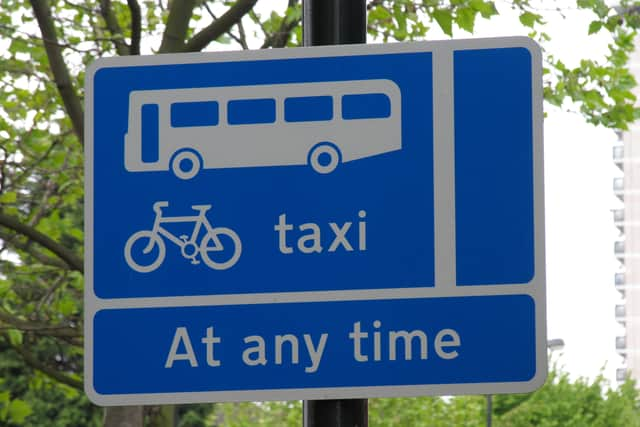Councils making up to £3.7m a year each from bus lane fines


Councils around the UK are raking in up to £3.7 million a year each from fining drivers for using bus lanes.
New figures obtained using Freedom of Information requests reveal that in just 12 months between 2020 and 2021, local authorities around the country made tens of millions of pounds from bus lane fines, with some councils issuing more than 115,000 tickets in a year.
Advertisement
Hide AdAdvertisement
Hide AdManchester not only issued the most penalty charge notices of any council - 116,862 - but also made the most revenue, collecting £3,701,458 in the 2020/21 financial year.
Bristol council issued the next highest number of fines - at 103,465 - but was only the sixth-highest earner, making £2,039,752. Barnet council, in north London made the second-highest amount of money, banking £2,991,690 from just 23,013 fines.


The figures, obtained by Moneybarn, also showed that Lambeth council was the third highest earner, making £2,737,179. That is despite issuing nearly 20,000 fewer PCNs than Glasgow (46,609 compared with 65,686), with the Scottish city coming fourth in the earnings table making £2,171,400.
Bus lanes are designed to make it easier for public transport to get around cities, avoiding congestion. In many cases taxis, motorcycles and bicycles are also allowed to use them but cars, vans and lorries are banned.
Advertisement
Hide AdAdvertisement
Hide AdIn order to discourage drivers from using and blocking bus lanes, councils monitor lanes using cameras with automatic number plate recognition and have the power to issue PCNs to drivers breaking the rules. Around most of the UK the standard charge is £60, reduced to £30 for prompt payment, but in London, the full fine is £160, cut to £80 if paid within 14 days.
The latest figures showed that Kingston-upon-Thames, which issued the fewest charges of any council (8,782), still made more than £560,000, while Portsmouth made the least money from drivers, bringing in £318,993 from 10,842 fines.


How to spot a bus lane
Bus lanes are generally easy to recognise but hundreds of thousands of drivers still get caught out using them every year, either deliberately or because they were confused about the rules.
A bus lane is marked on the road by a thick, solid white line and the words “bus lane” will be painted along it at regular intervals. Many cities now also paint the road surface of bus lanes to make them stand out. A dashed white line will mark the start and end of a bus lane and roadside signs will also mark out the starting point.
Advertisement
Hide AdAdvertisement
Hide AdThe signs will also indicate which vehicles can use the bus lane and the lane’s hours of operation.
Some bus lanes have specific hours of operation - usually around morning and evening rush hours - while others operate 24 hours a day. A lane’s hours of operation will be displayed on signs at the start of the lane. If no times are listed, the lane operates 24/7.
Comment Guidelines
National World encourages reader discussion on our stories. User feedback, insights and back-and-forth exchanges add a rich layer of context to reporting. Please review our Community Guidelines before commenting.
